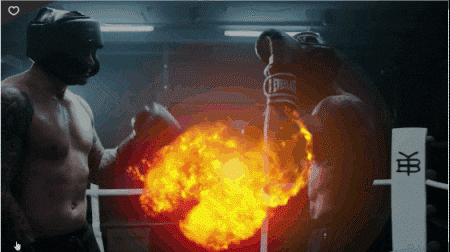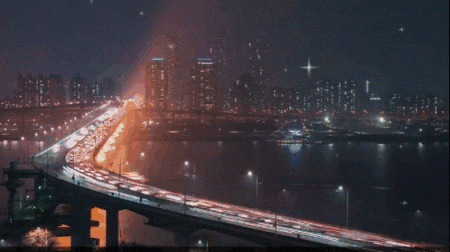- Home
- DIY Special Effects
- How to Create Smooth Warp and Turbulence Transition Effect?
Transcript
In this tutorial, I'm going to show you how to create this smooth transition using Filmora 13. This is so simple to create, so let's jump into Filmora and get started.
First, add your video clips and audio to the timeline, and you need to match those clips to the audio you use. Here, I matched my video clips to my audio like this. After that, we need to add movements to these clips, so first, I select my first clip and click this keyframe button to add a keyframe. After that, I use the scale and position to create the movements, so here, I keep this to default and move this keyframe to start like this.
I go to the center of this clip, change the scale to something like 200, and adjust the position like this. I go a few seconds forward and change the scale to 120. I also adjust the position like this.
I bring this keyframe to the clip end. Now, our first clip movement is complete, so next, we need to add movements to our second clip. I select here and add a keyframe like before, then go to the scale, and I change the scale to something like 200. I adjusted the position to something a little bit side like this because we need to match this clip position to our previous clip position, and it also gives a smooth look to these kinds of AMV edits.
After that, I bring this keyframe to the start, then I select the center of this clip and go to the scale. I changed the scale from 150, and I adjusted the position. After that, we need to make a zoom-in movement to his eye, so I select here and go to the scale, and I increase the scale to 300. I adjust the position like this; then, I drag this keyframe to the end. Now it zooms out and zooms into his eye like this.
After that, we need to create the rolling animation. I select here on the timeline, then I select all my text layers and go to the multiple sections, and create a key frame on position. After that, go to the start and select my first text layer, change the Y position like this. I select my second layer and move this text layer up and I keep doing the same thing for my other text layers like this.
Let's move to our third layer. I added a keyframe here, and I kept the default settings here. I go to the center and change the scale to something like 120. Go to the end, and I will change it back to 100.
Now it looks like this. You can see our movements aren't smooth. Let's see how to smooth our movements. I select my first clip and go to the keyframe panel. After that, select all these middle keyframes and right-click on them. Apply the curve preset to this. Now, it gives smooth curves like this. Let's see how it looks.
Now you can see it has a smooth look. I do the same thing for my other Clips like this. Now, our movement part is complete.
We need to add trans transitions between these clips. Go to the Transitions, and I will select the Warp Zoom 3 and Warp Zoom 6 transitions for this. You can see this has a zoom-out look, so I added this Warp Zoom 6 transition here. I changed the duration to 10 milliseconds and disabled the trimmed frames.
Now, we have a nice zoom-out that looks like this. Let's add a transition to this part as well. Here, you can see this has a zoom-in look, so I added this Warp Zoom 3 transition here like this. Now, our transition part is complete.
Let's see how to add the Warp look to these transitions. Go to the effects tab, select video effect, select Distortion, then select narrow effect and add it to the timeline. After that, I take the 25-frame long part of this layer, then go to the start and create a keyframe for the percentage.
I change the percentage to zero. Go here, and you can adjust this percentage you like, so I changed it to 50. Go to the end, and I will change it back to zero. Now, our transition looks like this. I didn't add a warp effect here because I like to add a turbulence effect to this part.
Let's see how to add turbulence look to this. Go back to the effects tab, select this "Distorting Mirror 3" effect, and add it to the timeline. This effect gives a nice turbulence look like this. After that, I take 25 frames long part of this layer.
I bring this layer here and go to the start, create a keyframe on strength, and keep the strength value to five. Go to the end and change the strength to zero. I took a copy of this effect layer and pasted it here. Now, our smooth transition looks like this.
Finally, I will show you how to create this color-changing effect. It's very simple. Go to the effects tab and search for the Hue shift effect. Add it to the timeline like this. Go to the effect settings, and you can create a color-changing effect using this Hue set. Go to the start and create a keyframe on Hue, and I change it to zero. Go to the end, and I will change it to 100. Our smooth transition is done. Here's the result.
That's how we can make a smooth transition inside Filmora 13. You can see it's so easy to create, and you can also download this complete project file with the help of a link in the description. Also, if you need to learn more about Filmora tutorials, you can check my Filmora tutorial playlist. I have done many tutorials about Filmora, and you can check them after watching this video.
Thanks for watching this tutorial; I hope you enjoy this. Also, please leave a like for this video, and be sure to subscribe to my channel and leave a comment about it. And what tutorial would you like next? Let's meet up for the next video. Take care and peace!
Ultimate Guide to Creating Stunning Pinch Effect
What you need to prepare:
- A computer (Windows or macOS)
- Your video materials.
- Filmora video editor
Step 1 Add Video Clips and Audio to the Timeline
To begin, you should add your video clips and audio to the timeline in Filmora. Ensure that the video clips match with the corresponding audio track. You can also arrange the clips and audio on the timeline to achieve the desired sequence.

Create Movements for the First Clip
Select the first video clip on the timeline and click the keyframe button to add it. It will allow you to create movements for the selected clip. Leave the scale and position at their default settings. You can move the keyframe to the start of the clip.

Change the scale to 200 for the center part of the clip. You can adjust its position as desired. Move a few seconds forward, change the scale to 120, and adjust the position again. Remember, you can change these numbers as required. Finally, bring the keyframe to the end of the clip. It will complete the movement for the first clip.

Add Movements to the Second Clip
Select the second clip on the timeline and add a keyframe at the beginning, as done previously. You can change the scale to 200 and adjust the position slightly to the side. It ensures the clip matches the position of the previous clip for a smooth transition.

Move the keyframe to the start of the clip. Head over to its center. You can change the scale to 150 and correct the position. Select a point closer to the end of the clip and increase the scale to 300. You can also adjust the position to zoom in on a specific area. Drag the keyframe to the end of the clip, creating a zoom-out and zoom-in effect on the desired location.

Animate the Third Clip
For the third clip, add a keyframe at the beginning and keep the default settings. Move to the center of the clip. You can change the scale to 120 this time. Go to the clip end and reset the scale to 100.

Ensure Smooth Movements
You must ensure smooth movements between keyframes. So, select the first clip and open the keyframe panel. Choose the middle keyframes and right-click on them. Apply the "Curve" preset to these keyframes. It will create smooth curves between them. Repeat this process for the other clips to achieve a smooth animation throughout.

Add Transitions between Clips
You can find the Warp Zoom 3 and Warp Zoom 6 options in the transitions panel. Choose the Warp Zoom 6 option for clips that need a zoom-out effect. Likewise, select the Warp Zoom 3 transition for clips that need a zoom-in effect. You can adjust the duration and settings as required. It will help you achieve the desired transition style.

Apply the Warp Effect to Transitions
You can also add a warp effect to the transitions. Go to the effects tab and select the "Video Effect" menu. You will find the "Distortion" effect category containing different effects. Apply the "Narrow" effect to the timeline.

Select a 25-frame segment of the layer and create a keyframe on the "Percentage" setting at the start. You can set the percentage to zero for the start and adjust it to 50 for the middle segment. Finally, reset the percentage to zero at the end of the segment. It will create a warping effect on the transition.

Add a Turbulence Effect
For a turbulence effect, go back to the effects tab and select the "Distorting Mirror 3" effect. Add it to the timeline and adjust the settings as desired. Create a 25-frame segment of the effect layer. You can add a keyframe on the "Strength" setting at the start and set it to 5. At the end of the clip, change the strength to zero. It will create a turbulence effect on the transition.

Apply a curve preset to the scale keyframes for a smooth transition. Finally, select all your text layers and create a compound clip by pressing "Alt + G" to group them. That's it! Your rolling text animation is ready.
Create a Color-Changing Effect
You can also mix a color-changing effect in the same clip. Search for the "Hue Shift" effect in the effects tab and add it to the timeline. In the effect settings, create a keyframe on the "Hue" setting at the start of the clip and set it to zero. At the end of the clip, change the hue value to 100. So, it will cause the colors to shift gradually throughout the clip's duration.

Apply a curve preset to the scale keyframes for a smooth transition. Finally, select all your text layers and create a compound clip by pressing "Alt + G" to group them. That's it! Your rolling text animation is ready.
Seamless movements, visually striking transitions, and eye-catching effects! These are the necessary parts of the video editing process. They can breathe life into your videos. So, make sure you follow each step outlined in this guide. As you know, video editing needs continuous learning. A creative mind often comes out when you step out of your comfort zone. Thus, don't be afraid to push your limits and try new techniques with Filmora Creator Hub.




